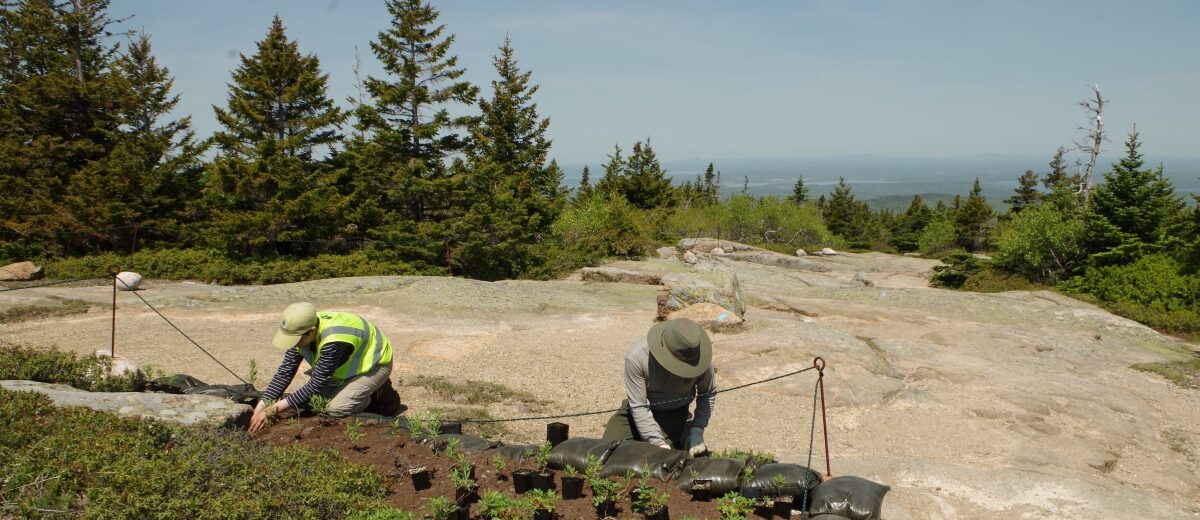Managers at national parks and other public lands face rapidly changing conditions that demand new approaches to caring for and protecting nature and culture.
A new report from the National Park Service and several federal agency partners presents and explores options for responding to rapid, irreversible ecological change. “We want to encourage managers to consider strategic, forward-looking actions rather than structure goals based on past conditions,” said Schoodic Institute President and CEO Nicholas Fisichelli, a co-author of the report.
For over a century, the past has served as a baseline for conservation and restoration efforts. But the past is no longer the guide it used to be. Today, climate change is rapidly altering environmental cycles and processes, reshaping ecosystems in national parks and other protected areas.
For example:
- the climate is expected to become unsuitable for common tree species in Acadia National Park;
- extreme storms and rising sea levels threaten shell mounds and other coastal cultural sites of Indigenous peoples;
- drought is leading to large-scale tree loss in places like Sequoia and Rocky Mountain National Parks;
- wildfires are intensifying in Yosemite and other Western parks.
Climate change will continue to affect ecosystems of national parks and other protected areas for decades to come, transforming landscapes in surprising ways.
The new report outlines a framework to help park managers decide when, where, and how to resist the changes that lead to undesirable conditions; accept new conditions; or direct a desired future.
In Acadia, managers anticipate a shift in forest trees from spruce and fir to oak and other temperate deciduous hardwoods. They are actively resisting the ecological trajectory that leads to forest loss by controlling invasive shrubs and vines and identifying areas of climate refugia, while accepting the arrival of new tree species into the forest, and evaluating options for further directing forest transitions through tree planting experiments.
“Our conservation goals have to be realistic and sustainable,” said Rebecca Cole-Will, Program Manager for Cultural and Natural Resources at Acadia National Park and St Croix Island International Historic Site. “Trying to ‘hold the line’ in the face of change is getting harder and more expensive. The framework in this report helps us make informed, purposeful choices about how to respond to the accelerating trajectory of change.”
Download the full report:
Resist-Accept-Direct (RAD)—A Decision Framework for the 21st-century Natural Resource Manager
